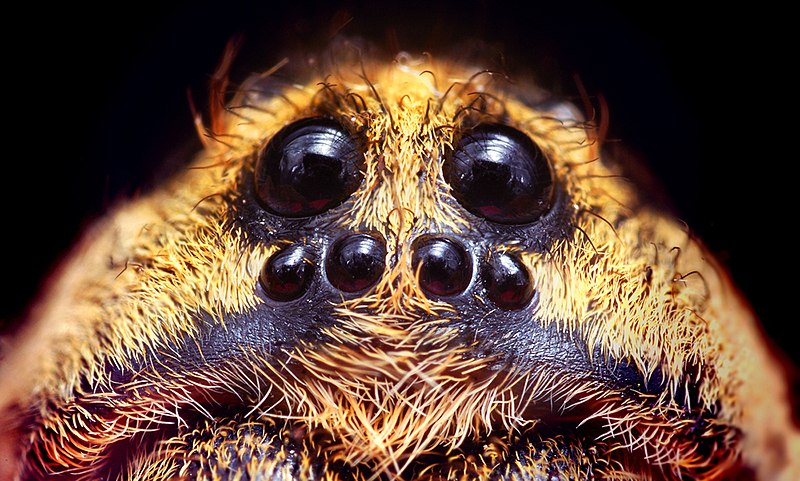I'll be honest: spiders frighten me. I know that God created them, and I appreciate the work He put into them, but no matter how hard I try I can't summon up any special affection for them. So when I came across a large spider last night, I initially didn't want to photograph it. But then I thought: if God deigned to create it as He created me, why shouldn't I include it in my chronicle? Why should I leave some creatures out? So I snapped a few shots and, suppressing my aversion, even got some close-ups. I've identified it as a species of Wolf Spider,
Hogna lenta, but unless I can get a ventral view I won't know for sure. Other possibilities are
H. carolinensis and
H. antelucana.
 |
| As you can see, the spider's entire body is covered with hair. This feature no doubt sharpens its sense of touch. |
 |
| Notice the eyeshine from my lantern and the flash on my camera. A wolf spider's eyes reflect light well. |
 |
| Here's a good view of the pattern on its cephalothorax and abdomen. This is one of the traits that distinguishes species, which are difficult to identify and may be confused with spiders of another family (Pisauridae). A wolf spider's coloring and pattern is intended for camouflage. |
 |
| Notice the 2 prominent eyes (it has 8 total) and the large chelicerae (mouthparts). |
More information on wolf spiders can be found at
http://www.uky.edu/Ag/CritterFiles/casefile/spiders/wolf/wolf.htm. An in-depth look at the genus
Hogna (with many good photos) can be found at
http://bugguide.net/node/view/3381.
One of the ways to distinguish a wolf spider from, say, a nursery web spider, is its 2 prominent eyes. Here is a photo that shows two of a
Hogna wolf spider's three rows of eyes (the last row is on the top of the head, visible in the next photo).
 |
| Credit: Opoterser, Feb. 2008 |
And here is another photo showing the entire head of another
Hogna species,
H. antelucana. See those top two eyes?
 |
| Copyright © 2012 Jerry Armstrong |
The wolf spider has excellent eyesight (far more advanced than our slugs'!), which enables it to hunt at night. It's a solitary hunter that may even chase its prey some distance. Another interesting fact (which you'll read about in more detail on the websites I provided) is that the female wolf spider will carry her egg sac and, after the spiderlings hatch, will carry her young on her abdomen.
I must admit, after researching this spider, it's not quite so scary anymore. In fact, it's kind of cool. I mean, if nothing else, just look at the details. Isn't God a magnificent craftsman?








No comments:
Post a Comment